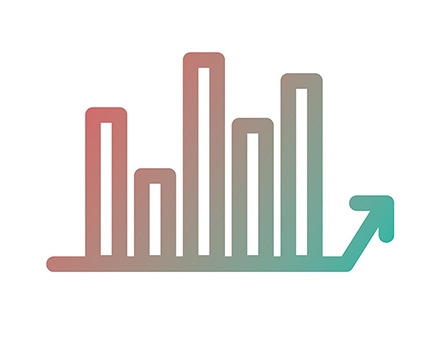SAM Magazine—Winter Park, Colo., May 25, 2023—The winter 2022-23 ski season ended on a high note courtesy of extraordinary snowfall across the West.  But the upcoming months are showing considerable slowing from previous summers. Data collected by DestiMetrics, part of the business intelligence division of Inntopia, through April 30 show notable declines in on-the-books occupancy for the upcoming summer as well as softening lodging rates across many Western mountain destinations.
But the upcoming months are showing considerable slowing from previous summers. Data collected by DestiMetrics, part of the business intelligence division of Inntopia, through April 30 show notable declines in on-the-books occupancy for the upcoming summer as well as softening lodging rates across many Western mountain destinations.
DestiMetrics' monthly Market Briefing notes that the economy is finally starting to rattle the confidence and vacation planning of summer mountain travelers. The Briefing reflects the performance of approximately 28,000 lodging units in 17 mountain destinations across Colorado, Utah, California, Nevada, Wyoming, Montana, and Idaho.
Occupancy for April was up 5.3 percent vs. April 2022, while the average daily rate (ADR) rose 2.7 percent. Aggregated revenues were up 8.1 percent. A comparison to April 2019 shows that occupancy was up a strong 12.4 percent.
Overall, winter 2022-23 eked out an 0.2 percent gain in occupancy, with larger gains in daily rates and revenues. ADR finished up 5.9 percent over last year and revenues rose 6.1 percent. Compared to 2019, occupancy was down 0.4 percent but ADR was up a dramatic 43.1 percent.
Summer is an entirely different story, with occupancy down 9.1 percent from last year at this time.
ADR has suffered, as rates are up just 2.8 percent for the summer, and lower than they were just one month ago. Compared to the same time four years ago—the last summer before the pandemic hit—occupancy is down 8.8 percent, but the daily rates are up 40.8 percent.
“Mountain destinations cater to a more price-sensitive consumer during the summer months, and with high inflation and rising interest rates persisting and discouraging big-ticket purchases such as travel, the unchecked pattern of escalating daily rates appears to be coming to an end,” said Tom Foley, senior vice president of business intelligence for Inntopia.
Foley noted that the 9.1 percent decline in occupancy is a slight improvement from the 13.3 percent decline for summer reported at the end of March, and was achieved with declining room rates.
That's a clear indicator of economic forces impacting travel at mountain destinations, he said, adding that the 6.5 percent decrease in revenues, if it holds, would lead to "the first seasonal decline since immediately after re-opening in 2020.” After two years of pent-up demand and/or good snow, "We’re seeing traditional market forces coming into play in mountain communities," Foley said. "Travelers are a lot more rate sensitive this summer than they have been for a very long time."
Further, he noted that various consumer surveys show that consumers’ expectations about inflation didn’t change during April, but "their stated intentions to make a major purchase such as a home, car, major appliance or travel have declined,” cautioned Foley.
Another sign: the average length of a summer stay has dipped 0.07 nights compared to last year, and is down a very sharp .27 nights compared to summer 2019. “The numbers don’t sound that big, but shorter stays are a major contributor to slowing demand, and put simply, for every 10 nights booked this summer, there are 2.7 nights fewer than 2019—and that is a substantial decrease,” warned Foley.
“As pretty stiff economic headwinds continue to blow, lodging properties are facing a very different reality after 24 months of easy, high rate bookings,” he warned. “Careful rate management and added-value elements become increasingly relevant for mountain destinations as they navigate the delicate balance of attracting guests and managing the bottom line."




